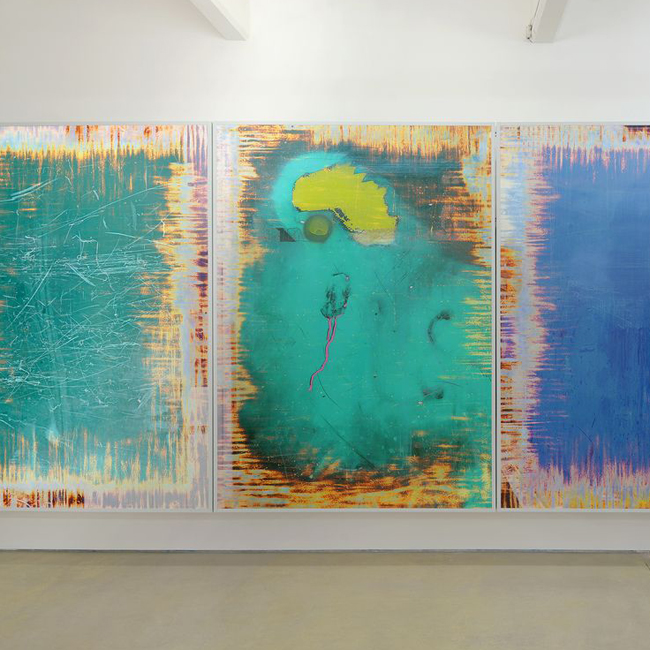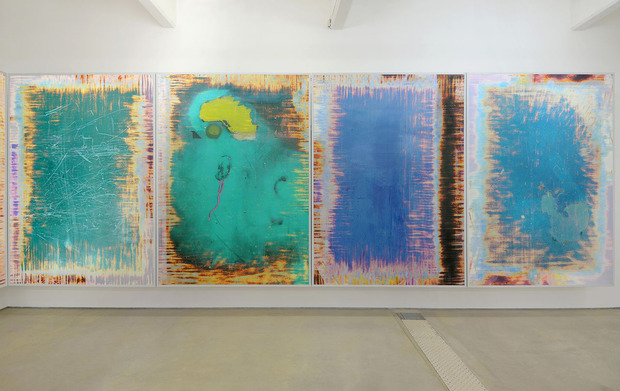Richard Galpin: Elephant (Ten Thousand Revolutions per Minute)
The British artist explores gentrification through his mind-boggling, colorfully abstract photographs on view at London’s Hales Gallery


British artist
Richard Galpin is best known for his scalpel-cut photographs of cities, but for his fifth solo exhibition—”Elephant (Ten Thousand Revolutions per Minute)”— on now at London’s Hales Gallery, the artist left his old methods behind, choosing instead to create a wall installation. A steel stud-work structure projects from the wall of the gallery, supporting 10 large panels of photographic paper on which Galpin’s images are printed.
The structure is reminiscent of scaffolding, befitting he subject of Galpin’s prints: the changing face of South London area Elephant and Castle. The region is currently the subject of a £1.5 billion regeneration program that has met with resistance from many locals who are wary of possibly losing the spirit of their neighborhood to the gentrification that’s sweeping the city’s most run-down areas.

Galvin says his new work “is concerned with the small ongoing shifts in the environment, planning and commerce—evolutions in ideology and taste that are embedded in the urban environment and material surfaces. These are the everyday revolutions of the dominant ideologies, translated into the localized strategies of the day, the ones that stick and become part of the urban fabric—and now my work.”
Ideas of authenticity and change are explored in the photographs, which Galpin have worked over with an electric sander. The tool (most often used by car body shops) erases the images, revealing layers of dye in the paper that disperses and is ground back into the surface. The resulting colorful, mind-boggling artworks look more like paintings than photographs. In one photo, patches of pink paintwork on a building show where the logos of government regeneration agencies have been painted over, a change in the abstract—agencies being created and then done away with—that has left no other trace on the empty site.

Like the ways in which changes on the surface have left the pictures of Elephant and Castle unrecognizable, Galpin’s photographs show how the city is vulnerable to even the smallest of alterations, and how—over time—these changes can completely obscure the original landscape.
“Elephant (Ten Thousand Revolutions per Minute)” is on at Hales Galleryuntil 31 May.
Richard Galpin, “Elephant (Ten Thousand Revolutions per Minute)”, Hales Gallery, 2014. Image courtesy of the Artists and Hales Gallery, London. Copyright of the Artist.












